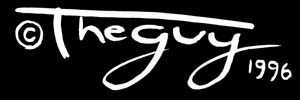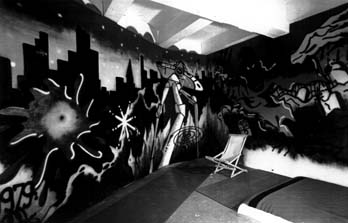
PIONEERING ART MOVEMENTS AND PUBLIC AWARENESS
1978


Jack Klein, infamous Soho landlord, was interested in attracting investment
in his building. The Guy's reputation of having created the original look
for Fiorucci, helping Maurice Beidermann to
set up YSL ready-to-wear in the US, Trax, Clarets and Unique Clothing Warehouse
prompted Klein to propose that The Guy expand the Canal Zone to the lower
floors of his Canal Street building.
The Guy attracted people like Keith McNally (who later opened Odeon, Nell's
and other clubs), Rudolph (who opened Dancteria) and many more.
The Canal Zone fueled peoples imagination along with the Mudd Club. The
avantgarde setting of the Canal Zone and its encouragement of local talent
attracted The Tubes (a media parody art-school band), Debbie Harry (Blondie)
and the B52's. Even Andy Warhol's jaded entourage, in need of replenishment,
could be found at the Canal Zone collecting inspiration for Warhol's
scene. Glen O'Brien and Tony Shafrazi were amongst these.
The Guy provided facilities in the Canal Zone for Lee, Slave and Fab Five
Freddy to produce a series of murals which had been promised exclusive coverage
by the New York Times. Months of planning with Ron Alexander (the Style
Editor of the New York Times) arranging the photo-shoot came to nothing
when the New York Times decided not to publish the article and pictures
as the subject (graffiti) was considered too controversial.
In an attempt to alleviate Lee's disappointment and that of his friends
and to encourage other aspiring graffiti artists, The Guy organised a work-themed
media event with which the Canal Zone was opened on 29 April 1979.
All those mentioned above attended the opening party - it was on this occasion
that Jean-Michel Basquiat first identified himself, publicly, as SAMO. The
Canal Zone both inspired and gave the lead to the Eighties.


